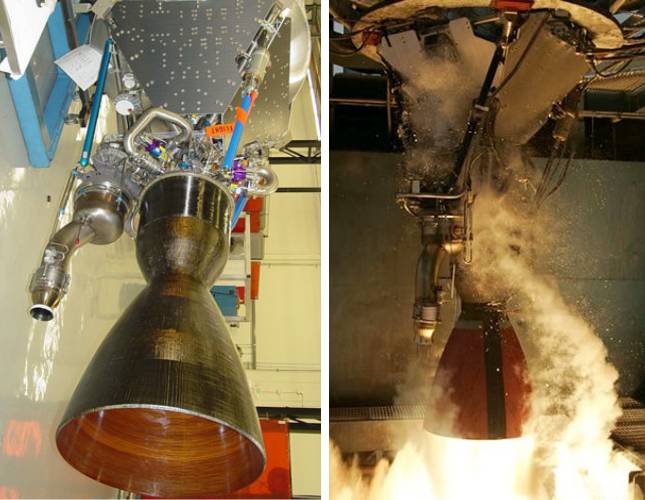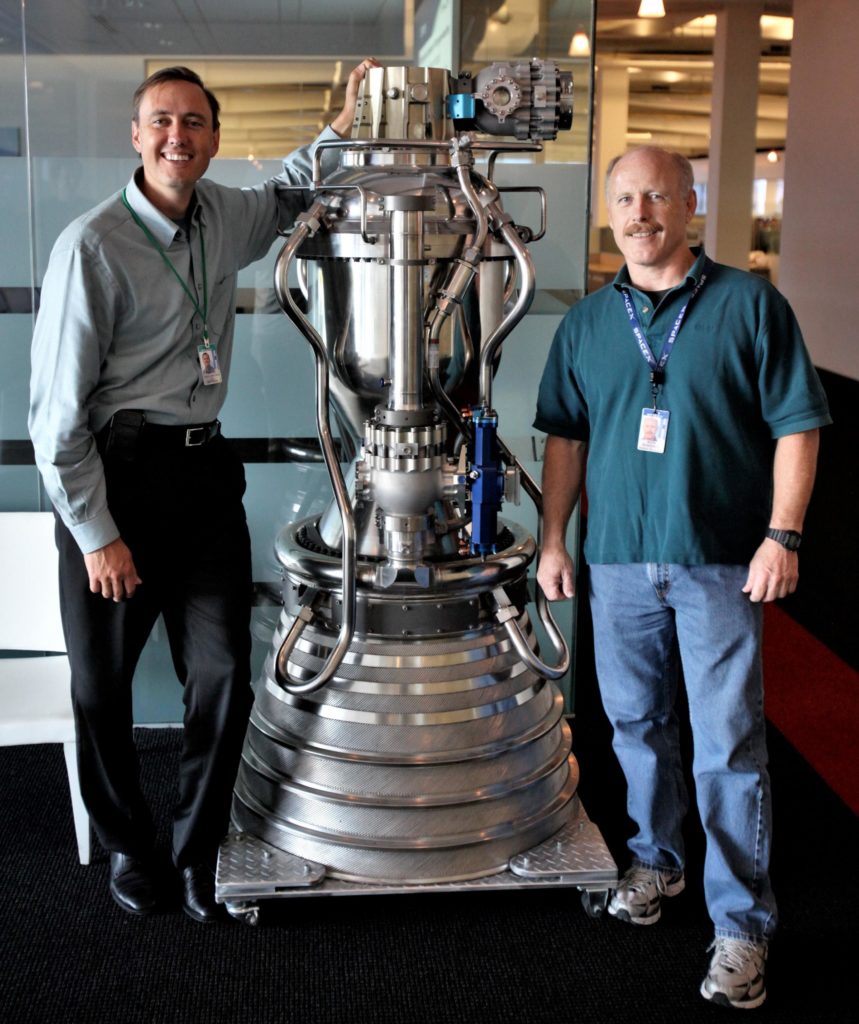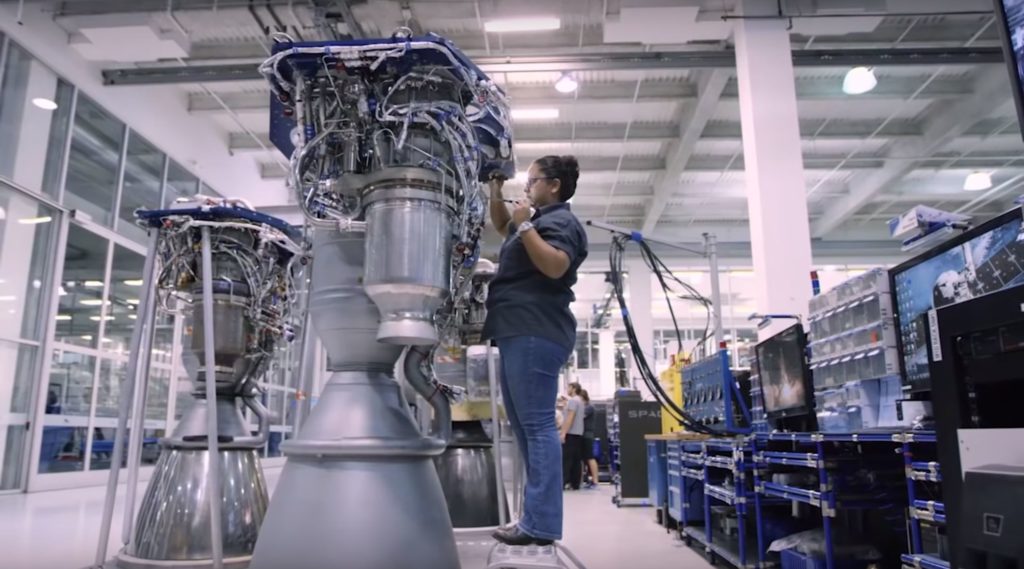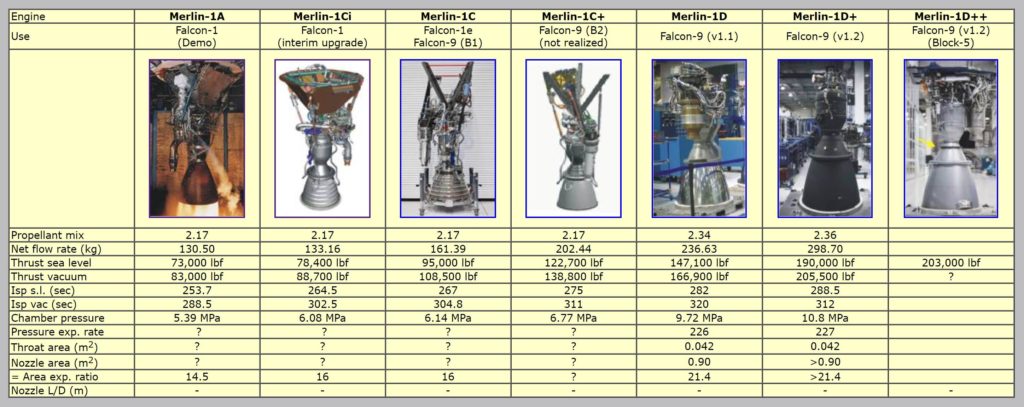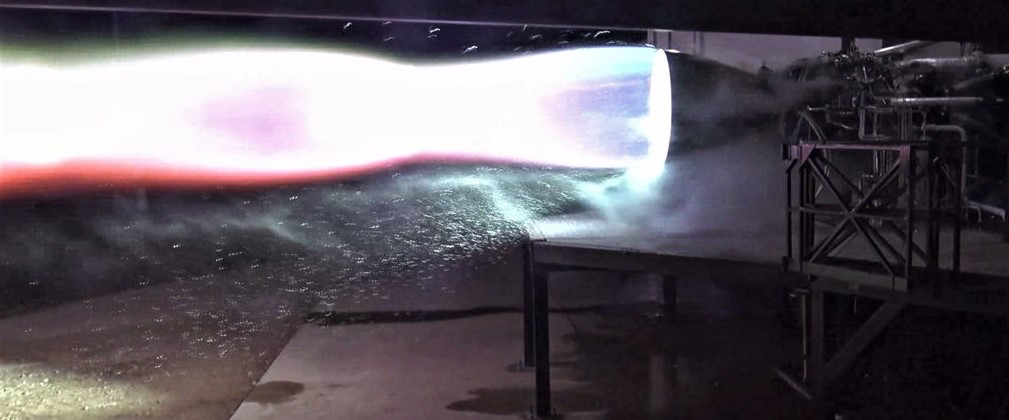
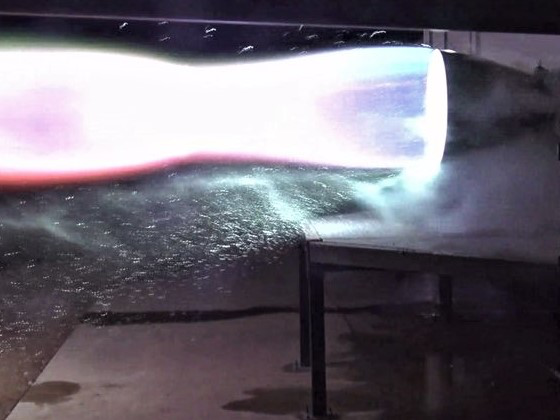
News
SpaceX’s first redesigned Raptor static fire paves the way for Starship’s hop test debut
After years of development, multiple prototypes constructed, and more than 1200 seconds of cumulative static fire testing at durations longer than what is needed to land on Mars, SpaceX propulsion engineers and technicians have successfully built and static-fired the first flight-worthy Raptor for the first time ever.
This is an incredibly important step towards BFR (Starship/Super Heavy) launch operations and is even more directly encouraging for the first integrated hop tests of SpaceX’s Starship prototype (unofficially deemed Starhopper), which could very well be the next host of the pathfinder Raptor engine pictured below.
— Elon Musk (@elonmusk) February 4, 2019
In the scope of SpaceX’s history designing, building, and optimizing large-scale rocket engines, Raptor’s development likely followed a similar path. While Merlin 1 operates on a dramatically simpler combustion cycle (gas-generator), uses different fuel (kerolox vs. methalox), and is significantly less powerful and efficient than Raptor (as proposed), the workhorse engine went through a range of dramatically different iterations (Merlin 1A, 1B, 1C, and 1D) and is scarcely recognizable when its earliest block is compared to its most recent version. Merlin 1A began as an ablatively cooled 340 kN (76,000 lbf) engine, while the current workhorse (generally known as Merlin 1D Full Thrust, M1D FT) features a regeneratively-cooled nozzle and produces more than 840 kN (190,000 lbf), nearly a threefold improvement in thrust.
- Merlin 1A. (SpaceX)
- Merlin 1C – SpaceX considered but never actually built Merlin 1B. (Steve Jurvetson)
- Fresh Block 5 Merlin 1D engines are built and assembled in Hawthorne, CA before heading to Texas for testing. (SpaceX)
- An exceptional chart showing the extensive changes SpaceX’s Merlin family has undergone in more than a decade of development and operation. (www.B14643.de)
Raptor’s subscale prototype – featuring twice the chamber pressure of M1D (200 bar, ~3000 psi) and around the same maximum thrust as Merlin 1D (~1000 kN, 225,000 lbf) – can effectively be examined as the Merlin 1A to the Merlin 1C or 1D-class Raptor that SpaceX’s propulsion team settled on after learning from its smaller predecessors.
Performed on a Raptor-specific test cell at SpaceX’s McGregor, Texas “Rocket Ranch”, this milestone static fire was enabled by what one can safely assume were dozens or hundreds of lessons-learned over the course of two years of prototype engine testing and iterative improvement, working up to a quasi-final design that was shipped to Texas and installed just a few days ago. To kick off the first critical static fire of the pathfinder Raptor hardware, reports from ground observers indicate that SpaceX engineers began with a series of extremely short ‘blip’ tests that appeared perhaps 2-3 seconds from ignition to shutdown.
— Elon Musk (@elonmusk) February 4, 2019
Starhopper’s one-stop hop spot
The immensely encouraging news of Raptor Block 1’s first successful static fire comes as SpaceX engineers, technicians, and contractors work around the clock to build both the first full-scale Starship prototype (nicknamed Starhopper) and the spartan pad it will lift off from during hop tests. SpaceX’s Boca Chica facilities were marked by a burst of pad-related activity over the last week or two, including the early installation of a range of pipes (some of it insulated for supercool cryogenic methane and oxygen) and the creation of a berm pointing towards the probable location of Starhopper’s simple launch mount and pad. ‘
While the Starship prototype’s three Raptor engines will dramatically outclass Falcon 9’s Grasshopper and F9R development vehicles (also used for hop tests), it’s possible that the same setup – basically a flat (refractory?) concrete pad with GSE (ground support equipment) protected behind a berm and automated water jet turrets around the vicinity – could work for Starhopper, too. For now, the successful static fire of the first post-development Raptor engine marks a massive step towards those initial hop tests and towards the first orbital launches of Starship and Super Heavy a bit further down the road. Stay tuned as SpaceX continues to extensively test Raptor and build out its Boca Chica pad and Starship prototype.
1-31-19 #SpaceX pic.twitter.com/VUgbxApjEc
— Austin Barnard🚀 (@austinbarnard45) February 1, 2019
Check out Teslarati’s newsletters for prompt updates, on-the-ground perspectives, and unique glimpses of SpaceX’s rocket launch and recovery processes!

News
Tesla Optimus V3 gets early third-party feedback, and it’s eye-opening
Jason Calacanis’ remarks, which were shared during a discussion at CES 2026, offered one of the first third-party impressions of the yet-to-be-unveiled robot
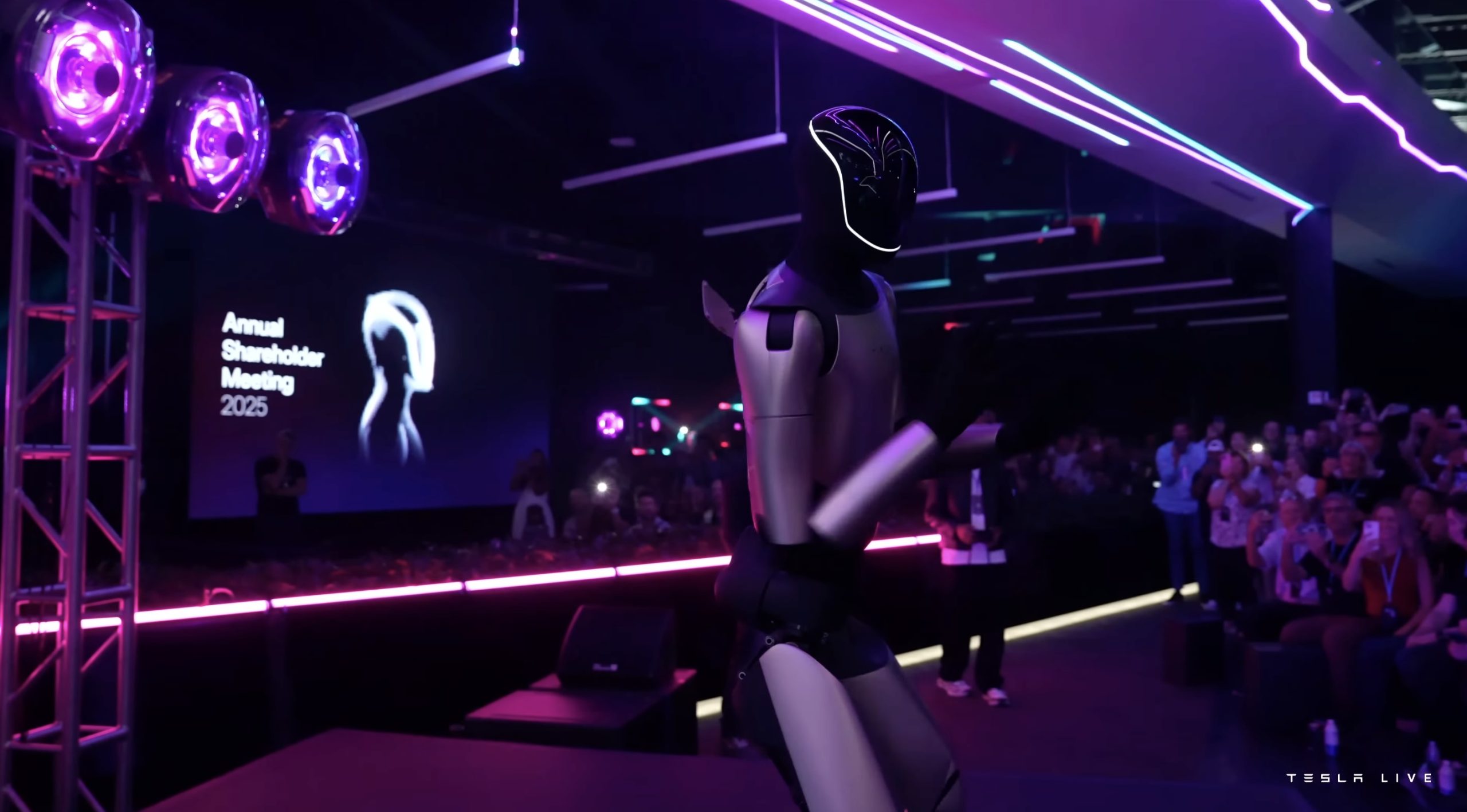
Angel investor and entrepreneur Jason Calacanis shared some insights after he got an early look at Tesla’s upcoming Optimus V3. His remarks, which were shared during a discussion at CES 2026, offered one of the first third-party impressions of the yet-to-be-unveiled robot.
Calacanis’ comments were shared publicly on X, and they were quite noteworthy.
The angel investor stated that he visited Tesla’s Optimus lab on a Sunday morning and observed that the place was buzzing with energy. The investor then shared a rare, shocking insight. As per Calacanis, Optimus V3 will be so revolutionary that people will probably not even remember that Tesla used to make cars in the future.
“I don’t want to name drop, but two Sundays ago, I went to Tesla with Elon and I went and visited the Optimus lab. There were a large number of people working on a Sunday at 10 a.m. and I saw Optimus 3. I can tell you now, nobody will remember that Tesla ever made a car,” he noted.
The angel investor also reiterated the primary advantage of Optimus, and how it could effectively change the world.
“They will only remember the Optimus and that he is going to make a billion of those, and it is going to be the most transformative technology product ever made in the history of humanity, because what LLMs are gonna enable those products to do is understand the world and then do things in the world that we don’t want to do. I believe there will be a 1:1 ratio of humans to Optimus, and I think he’s already won,” he said.
While Calacanis’ comments were clearly opinion-driven, they stood out as among the first from a non-Tesla employee about Optimus V3. Considering his reaction to the humanoid robot, perhaps Elon Musk’s predictions for Optimus V3 might not be too far-fetched at all.
Tesla has been careful with its public messaging around Optimus V3’s development stage. Musk has previously stated on X that Optimus V3 has not yet been revealed publicly, clarifying that images and videos of the robot online still show Optimus V2 and V2.5, not the next-generation unit. As for Calacanis’ recent comments, however, Musk responded with a simple “Probably true” in a post on X.
News
Tesla taps Samsung for 5G modems amid plans of Robotaxi ramp: report
The move signals Tesla’s growing focus on supply-chain diversification and next-generation communications as it prepares to scale its autonomous driving and robotaxi operations.
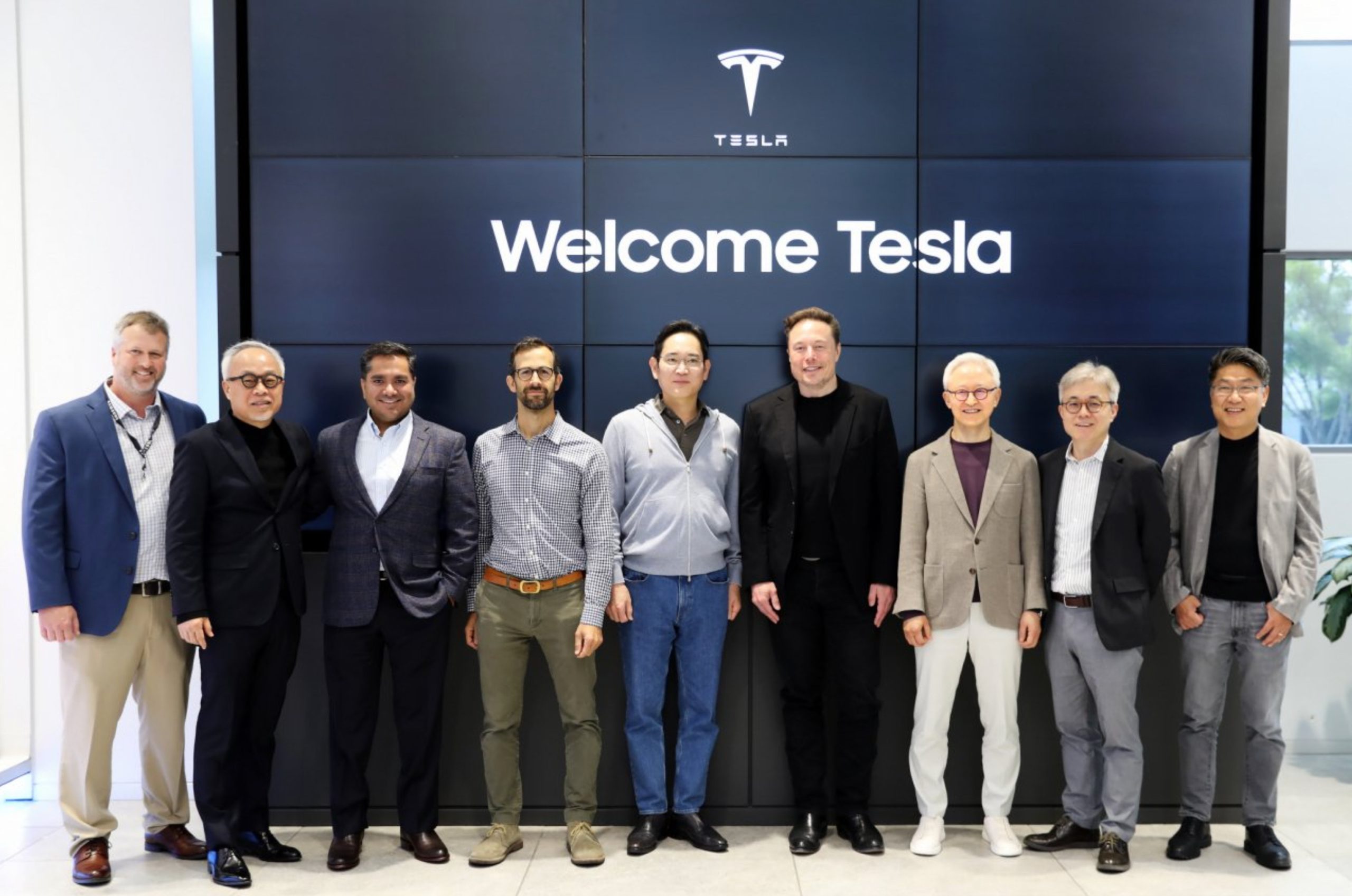
A report from South Korea has suggested that Samsung Electronics is set to begin supplying 5G automotive modems to Tesla. If accurate, this would mark a major expansion of the two companies’ partnership beyond AI chips and into vehicle connectivity.
The move signals Tesla’s growing focus on supply-chain diversification and next-generation communications as it prepares to scale its autonomous driving and Robotaxi operations.
Samsung’s 5G modem
As per industry sources cited by TheElec, Samsung’s System LSI division has completed development of a dedicated automotive-grade 5G modem for Tesla. The 5G modem is reportedly in its testing phase. Initial supply is expected to begin in the first half of this year, with the first deployments planned for Tesla’s Robotaxi fleet in Texas. A wider rollout to consumer vehicles is expected to follow.
Development of the modem began in early 2024 and it required a separate engineering process from Samsung’s smartphone modems. Automotive modems must meet stricter durability standards, including resistance to extreme temperatures and vibration, along with reliability over a service life exceeding 10 years. Samsung will handle chip design internally, while a partner company would reportedly manage module integration.
The deal represents the first time Samsung has supplied Tesla with a 5G vehicle modem. Tesla has historically relied on Qualcomm for automotive connectivity, but the new agreement suggests that the electric vehicle maker may be putting in some serious effort into diversifying its suppliers as connectivity becomes more critical to autonomous driving.
Deepening Tesla–Samsung ties
The modem supply builds on a rapidly expanding relationship between the two companies. Tesla previously selected Samsung’s foundry business to manufacture its next-generation AI6 chips, a deal valued at more than 22.7 trillion won and announced in mid-2025. Together, the AI chip and 5G modem agreements position Samsung as a key semiconductor partner for Tesla’s future vehicle platforms.
Industry observers have stated that the collaboration aligns with Tesla’s broader effort to reduce reliance on Chinese and Taiwanese suppliers. Geopolitical risk and long-term supply stability are believed to be driving the shift in no small part, particularly as Tesla prepares for large-scale Robotaxi deployment.
Stable, high-speed connectivity is essential for Tesla’s Full Self-Driving system, supporting real-time mapping, fleet management, and continuous software updates. By pairing in-vehicle AI computing with a new 5G modem supplier, Tesla appears to be tightening control over both its hardware stack and its global supply chain.
Elon Musk
Tesla Full Self-Driving pricing strategy eliminates one recurring complaint
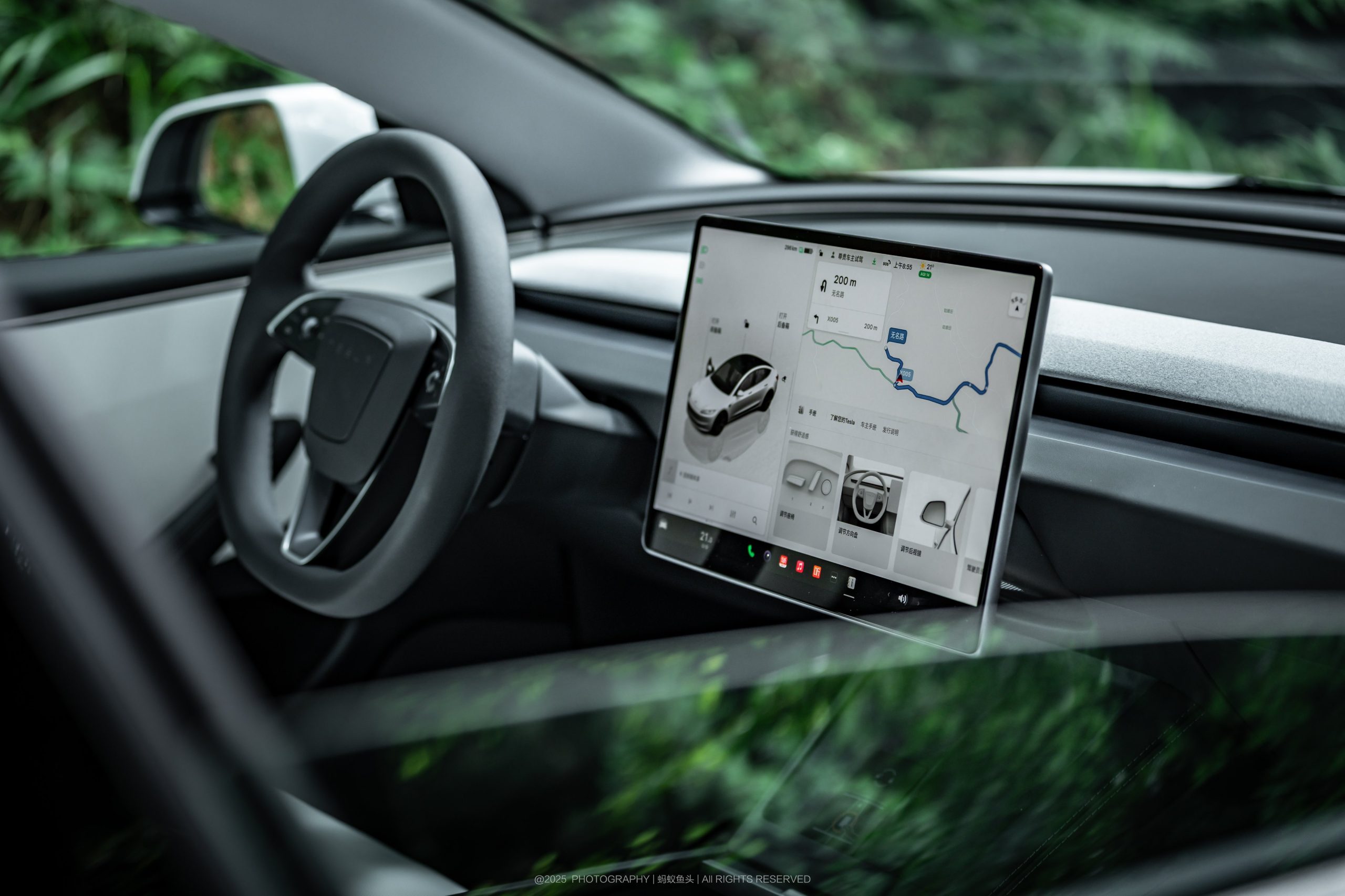
Tesla’s new Full Self-Driving pricing strategy will eliminate one recurring complaint that many owners have had in the past: FSD transfers.
In the past, if a Tesla owner purchased the Full Self-Driving suite outright, the company did not allow them to transfer the purchase to a new vehicle, essentially requiring them to buy it all over again, which could obviously get pretty pricey.
This was until Q3 2023, when Tesla allowed a one-time amnesty to transfer Full Self-Driving to a new vehicle, and then again last year.
Tesla is now allowing it to happen again ahead of the February 14th deadline.
The program has given people the opportunity to upgrade to new vehicles with newer Hardware and AI versions, especially those with Hardware 3 who wish to transfer to AI4, without feeling the drastic cost impact of having to buy the $8,000 suite outright on several occasions.
Now, that issue will never be presented again.
Last night, Tesla CEO Elon Musk announced on X that the Full Self-Driving suite would only be available in a subscription platform, which is the other purchase option it currently offers for FSD use, priced at just $99 per month.
Tesla is shifting FSD to a subscription-only model, confirms Elon Musk
Having it available in a subscription-only platform boasts several advantages, including the potential for a tiered system that would potentially offer less expensive options, a pay-per-mile platform, and even coupling the program with other benefits, like Supercharging and vehicle protection programs.
While none of that is confirmed and is purely speculative, the one thing that does appear to be a major advantage is that this will completely eliminate any questions about transferring the Full Self-Driving suite to a new vehicle. This has been a particular point of contention for owners, and it is now completely eliminated, as everyone, apart from those who have purchased the suite on their current vehicle.
Now, everyone will pay month-to-month, and it could make things much easier for those who want to try the suite, justifying it from a financial perspective.
The important thing to note is that Tesla would benefit from a higher take rate, as more drivers using it would result in more data, which would help the company reach its recently-revealed 10 billion-mile threshold to reach an Unsupervised level. It does not cost Tesla anything to run FSD, only to develop it. If it could slice the price significantly, more people would buy it, and more data would be made available.
